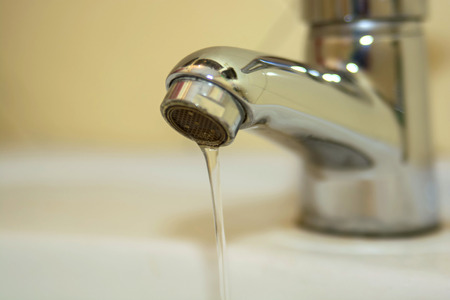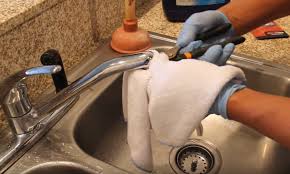The reason of your kitchen faucet lost water pressure can be very complicated. So I did some research and wrote this article about the common causes of low water pressure in your sink.
Next, why is the water pressure in the sink low? Sewage pressure in kitchen sinks is typically caused by clogged ventilation or cartridges. Damage to water pipes, routine repairs, and toilet leaks can also occur. Sometimes it can be due to a closed valve or a pressure reducing valve (PRV).
Kitchen faucet is one of the most used areas in the home. And the water pressure may drop slowly. This article has described the most common causes and solutions. Therefore, I find the information provided in this article useful.
What Causes Low Water Pressure in Kitchen Sinks Faucet?
There are several possible causes for low water pressure in the kitchen. First, make sure the water pressure is low in the kitchen and elsewhere. Or you can observe the flow rate of kitchen water. Or you can call the water company and ask if you want to repair a nearby water pipe. As a result, the water pressure in the vicinity didn’t becomes low. For kitchen sinks, the most likely causes are:
- Clogged faucet aerator
- Blocked faucet cartridge
it is most likely caused by one or more of the following:
- Water line breaks
- Leaking toilets
- Shut-off valves
- Pressure Reducing Valve (PRV)
In some cases, you can fix the issues with the right tools. For some others, it may be best to leave the fixing to a certified plumber. or you can check kitchen water flow rate, how many gallon the faucet has. Let’s look at all the possible causes below.
Faucet Aerator
An aerator is a device that controls the flow rate and is typically located near the end of the faucet. In many cases, minerals, particles or debris can prevent the aerator. As a result, the water pressure in the kitchen sink may decrease. In most cases, cleaning the aerator will restore water pressure.
You can remove it by turning the aerator counterclockwise by hand. If you find heat difficult by hand, you can use slip-joint pliers with tape around your teeth to improve your grip. After separation, the aerator is soaked in vinegar to shake off the deposits. As a rule, soaking the aerator overnight is sufficient. In conclusion, you can always get a replacement as long as the particles do not peel off too stubbornly.
Faucet Cartridge
A clogged faucet cartridge can reduce the water pressure in the sink. The cartridge controls the flow of water in the faucet. That is, when you turn the handle to open it, the cartridge opens the valve to allow water to flow. As you can see, cleaning the cartridge is a bit more complicated than cleaning the aerator.
Close the shut-off valve and drain all water before starting to dismantle the faucet. This is to ensure that no residue is left on the line. After that, close the sink plug to prevent garbage from leaking into the drain. Next, use a flat head screwdriver to tear off the handle cap. After removing the handle, you can use a pair of slip joint pliers to remove the retaining nut.
It is recommended to tape the pliers around the teeth to strengthen the grip. It also prevents scratches on the faucet. Then use regular pliers to pull out the retaining clip. Finally, the cartridge can be withdrawn from the opening.
You can soak it in vinegar overnight to clean the cartridge. Scratch the precipitate with a stiff brush. However, if the precipitate is too stiff to separate, replacement should be considered.
Hoses Breaks
You can open the cabinet to wheck it is wet. After a long period of use, the kitchen faucet hoses will age. It will burst suddenly. This one is still very obvious. However, it is also possible that the rubber in the water inlet pipe may break a hole, causing the water pressure to decrease.
Water Line Breaks
Occasionally the water supply pipe may be cut. However, detecting them can not be so easy. Not only is the sink water pressure lost, but the water pipes are very likely to break.
You can read on the meter to see if something is broken in the water supply pipe. That is, close all faucets and water outlets and read the meter. Reload the meter after about 4 hours. Changes in measured values are indicators of water leakage due to damage to the water supply pipe somewhere.
In the event of a potential break in the water lines, you should call a professional plumber to have look.
Leaking Toilet
Leaky toilets can also cause low water pressure in kitchen sinks and other areas. Part of the cause of the leak is damage to the supply line or toilet tank. Also, leaking flappers, charging valves or floats can become stuck. Also, the connection may be impaired or the flapper may be distorted.
You can do it yourself, but we recommend calling a certified plumber. They have experience in solving this kind of problem.
Shut-off Valve
A shut-off valve shuts off the water that goes to the kitchen sink and is generally below it. This valve is not always in operation, so mineral deposits tend to accumulate over the years. Therefore, it weakens the washer. Occasionally, leaks also tend to occur near the stem of the shutoff valve. First check if the valve is fully open anyway.
Above all, the closed shutoff valve has been the only cause of the low water pressure in the kitchen sink. If your kitchen sink has two shut-off valves (hot and cold water), check if both or only need to be replaced. In most cases, it is easier to replace than trying to activate a defective shutoff valve.
Before attempting to replace, be careful not to let water interrupt your work and close the water supply pipe. First, remove the water supply pipe connected to the shutoff valve and use a wrench to loosen the nut. You can delete it by turning it counterclockwise. Then remove the compression nut that secures the shutoff valve in place. Removing the compression nut separates the shutoff valve.
Make sure you have the same shutoff valve to replace. Tighten the compression nut to lock the new valve in place. However, the tightening nuts and pipes can be damaged too. Finally, connect the water supply pipe and tighten the nut.
Pressure Reducing Valve (PRV)
The PRV (also known as Pressure Regulator) is usually located on the line where it enters the home or office. It’s shaped like a bell and pre-set by the manufacturer. Adjust and see if it affects the water pressure or for any signs of damage.
If you feel the problem is with the PRV, You can replace it yourself or call a certified plumber to fix it. In case you decide to do it yourself, make sure you close the master shut-off valve first.
VIGA factory has more than 12 years exprience in producing and exporting faucet, there are CUPC, TISI, CE, BSCI, ISO 9001,etc. and on hour reaching Jiangmen port. that we can offer the high quality and best price to our customer.
If you want the E-catalog, pleases feel free to contact email: info@vigafaucet.com
 VIGA Faucet Manufacturer
VIGA Faucet Manufacturer 

